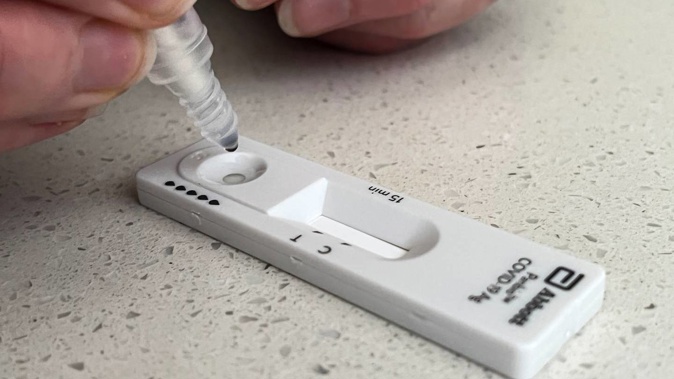
The widespread use of rapid antigen tests has taken pressure of testing capacity, but an expert has said they can miss 50 per cent or more of infected people.
Epidemiologist and University of Auckland professor Rod Jackson said RATs are useful in slowing down the spread of Omicron but they are not effective unless performed by trained professionals.
"When performed by untrained people [who] don't swab properly [or] test too soon after exposure they can perform poorly."
Jackson urged people to read RAT instructions fully and properly.
A number of health professionals have taken to social media to demonstrate how to correctly do a RAT yourself.
How to do a RAT test
There are three simple, but detailed, steps to take.
Step 1: Take the swab and insert it backwards into a nostril by 2–3cm. Be sure to insert it backwards and not upwards. Then swirl the swab inside the nostril for 15 seconds. Repeat in the other nostril.
Step 2: Put the swab into the vial of solution and rotate it at least five times. While removing the swab, squeeze the sides of the vial to release the liquid.
Step 3: Using the vial, put three drops into the testing well and wait for the time specified per kit instructions. This could be up to 15 minutes.
Reading the results
One coloured line next to the C on the test means a negative result.
Two coloured lines – one next to the C and the T, and even faint lines, means a positive result.
Those who test positive are advised to report their result to My Covid Record or by calling 0800 222 478 and choosing option three.
Test result issues
Last week, the Ministry of Health said they had been receiving reports of symptomatic people testing negative for the virus but were later receiving a positive test.
Their advice was to stay at home while symptomatic and to retest if symptoms persisted or got worse.
"If you are exposed to someone who has tested positive for covid and then you develop symptoms a few days later, you most likely have Covid-19, even if you have several negative RATs," said Jackson.
"You should self-isolate and assume you have Covid. If you continue to have two negative RATs despite ongoing symptoms, get a PCR test done."
He said that when performed by a trained professional, the rate of it being done successfully was 80 to 90 per cent.
"There can be major sensitivity issues when they are not performed by trained staff at the appropriate time."
President of The Royal New Zealand College of General Practitioners Samantha Murton also said tests may take days to come back positive because of the sensitivity of the test based on the viral load.
"In the early stage of the illness someone may not be shedding much virus; being immunised you may not shed much virus," she said.
- by Caitlan Johnston, NZ Herald
Take your Radio, Podcasts and Music with you









